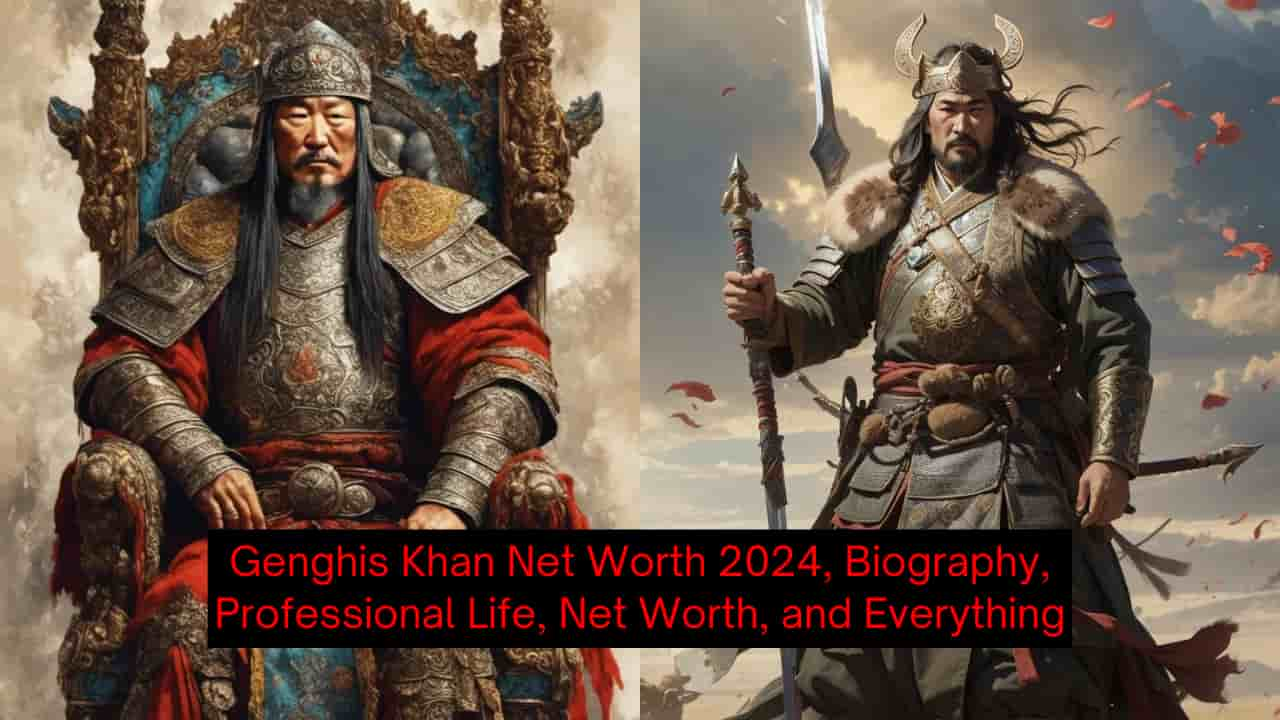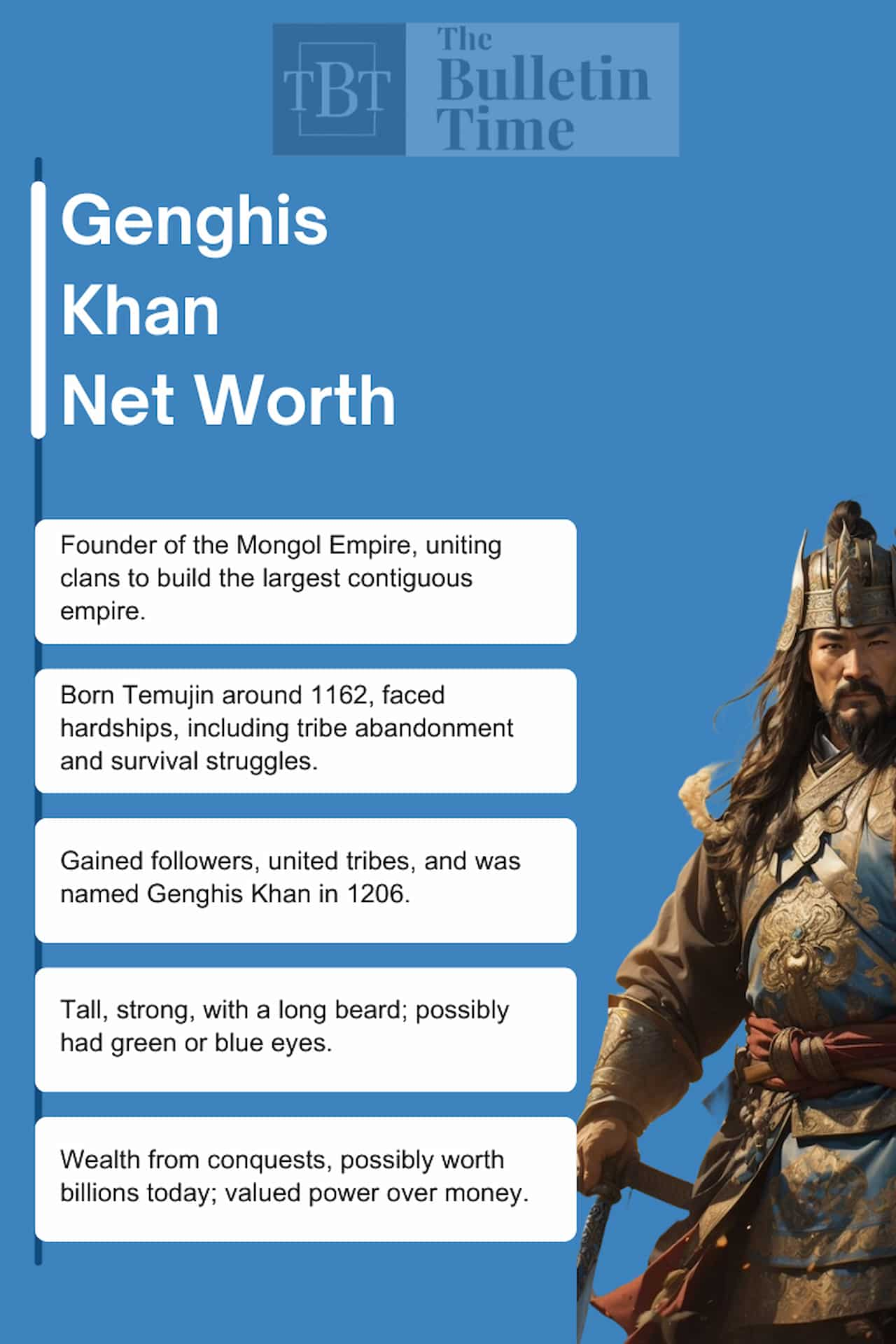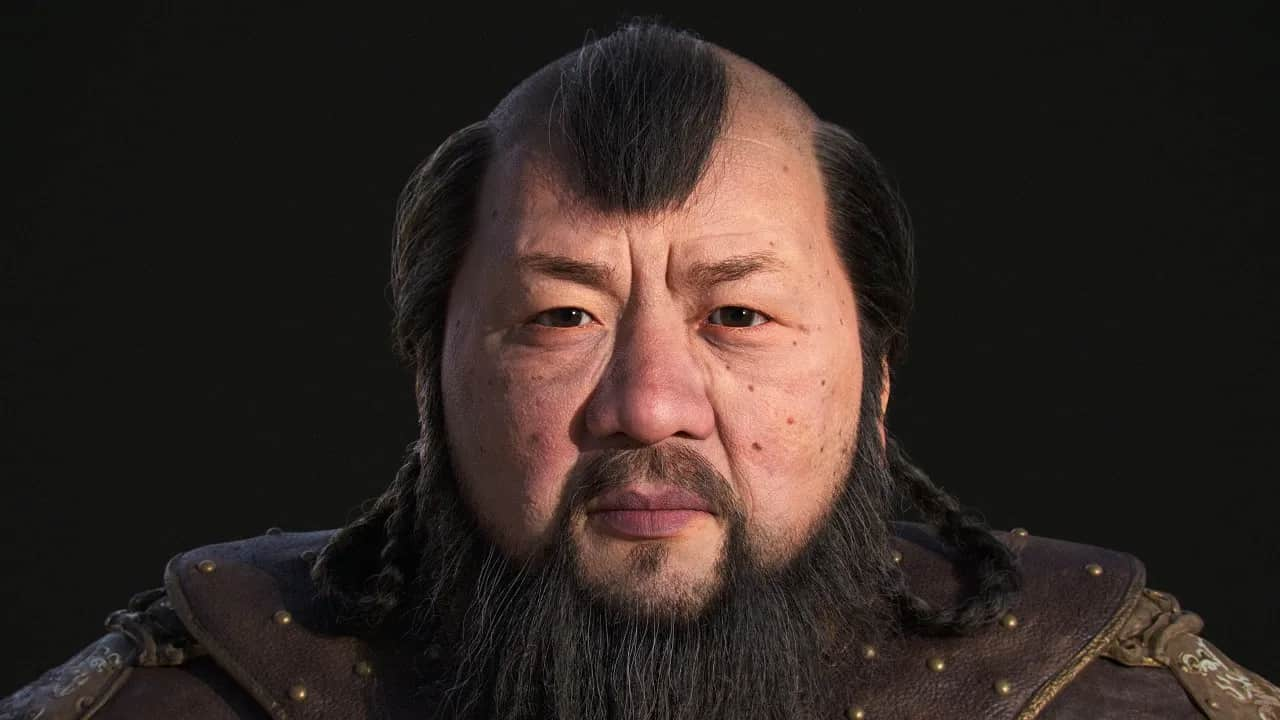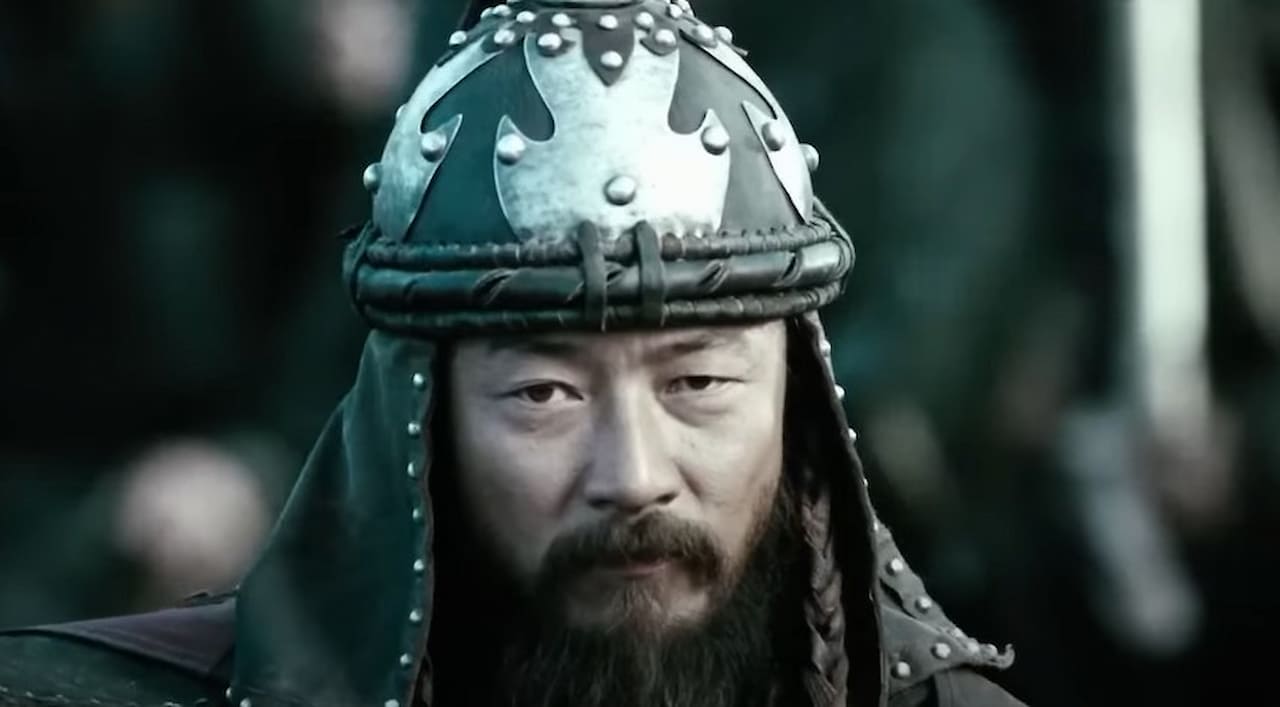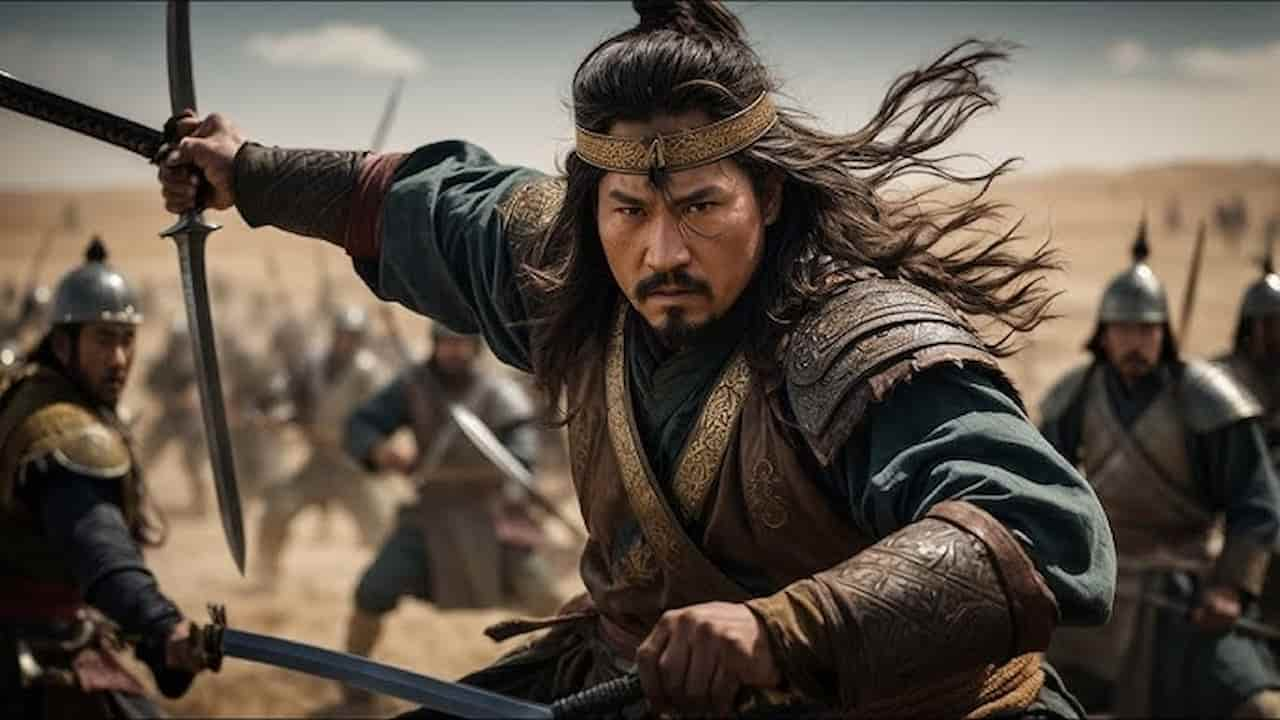Genghis Khan, born Temujin, was a 13th-century Mongolian warrior and ruler who founded history’s largest contiguous land empire. His life story is about incredible perseverance, strategic brilliance, and ruthless ambition. From humble beginnings as a tribal outcast to becoming the Great Khan of the Mongol Empire, Genghis Khan’s legacy fascinates and inspires people worldwide today.
Who was Genghis Khan?
Genghis Khan was the founder and first Great Khan of the Mongol Empire. Born into a nomadic tribe in Mongolia, he overcame a difficult childhood by uniting the Mongol clans and creating a formidable military force. Through conquest and diplomacy, he built an empire that stretched from the Pacific Ocean to Eastern Europe, forever changing the course of world history.
| Aspect | Details |
|---|---|
| Full Name | Genghis Khan (born Temujin) |
| Birth Year | Around 1162 |
| Death Year | 1227 |
| Title | Founder and Great Khan of the Mongol Empire |
| Birthplace | Near Lake Baikal, Mongolia |
Early Life and Struggles:
Birth and Childhood:
Genghis Khan was born around 1162 near Lake Baikal in Mongolia. His birth name was Temujin, which means “iron worker” or “blacksmith.” As a kid, Temujin faced many hardships. When he was just nine years old, his dad was killed by a rival tribe. His tribe then abandoned Temujin’s family, leaving them to fend for themselves in the harsh Mongolian wilderness.
Temujin, his mom, and his siblings had to eat wild plants and small animals to survive. They were inferior and struggled every day. But these challenging times strengthened Temujin and taught him essential skills to help him later in life.
Rising to Power:
As Temujin grew up, he slowly began to gain followers and allies. He was intelligent and brave, which made other people want to join him. He made friends with an influential tribal leader named Toghrul, who helped him become more muscular.
Temujin fought many battles against other tribes. He was good at making plans and leading his warriors. Little by little, he defeated his enemies and united the Mongol tribes under his leadership. In 1206, when he was about 44 years old, Temujin was given the title “Genghis Khan,” which means “Universal Ruler” or “Oceanic Leader.”
Age and Physique:
Physical Appearance:
Genghis Khan was said to be tall and robust, with a long beard and red hair. Some stories say he had green or blue eyes, rare among Mongols. He kept fit by riding horses and practicing archery, which were essential skills for Mongol warriors.
Age and Lifespan:
Genghis Khan lived to be about 65 years old, a long life for someone in the 13th century. He was born around 1162 and died in 1227. During his lifetime, he went from being a poor outcast to ruling the largest empire in the world.
Personal Life and Relationships:
Genghis Khan had many wives and children, which was typical for Mongol leaders. His first and most crucial wife was Börte, who he married when he was young. They had four sons who became essential leaders in the Mongol Empire.
Genghis Khan valued loyalty and family ties. He gave his sons and daughters important jobs in running the empire. He also rewarded his faithful friends and allies with power and wealth.
Even though Genghis Khan could be cruel to his enemies, he cared about his family and friends. He made sure his children were well-educated and prepared to rule after him.
Net Worth and Salary:
It’s hard to say precisely how rich Genghis Khan was in today’s money. He didn’t have a regular salary like we think of now. Instead, his wealth came from the lands and people he conquered.
At the height of his power, Genghis Khan controlled a vast empire with many valuable resources, including gold, silver, silk, and other treasures. Some experts think his wealth might have been worth hundreds of billions of dollars today.
But it’s important to remember that Genghis Khan didn’t think about money like we do today. For him, power and control over land and people were more important than having lots of gold or silver.
| Aspect | Details |
|---|---|
| Wealth | Wealth from lands and conquests; estimated in hundreds of billions (modern value) |
| Revenue Sources | Conquest, taxes, and trade |
Company Details and Investments:
Genghis Khan didn’t have a company in how we think of businesses today. His “company” was the Mongol Empire itself. He invested in building a strong army and creating a system of government that could control his vast empire.
Military Investment:
Genghis Khan spent a lot of resources on his military. He made sure his soldiers had the best weapons and horses. He also invested in new technologies, like siege engines, to help conquer cities.
Infrastructure:
The Khan also invested in building roads and setting up a fast communication system across his empire. This helped him control his lands and move his army quickly.
Trade and Commerce:
Genghis Khan understood the importance of trade. He protected merchants who traveled along the Silk Road, which helped increase trade between Asia and Europe. This brought wealth to his empire and helped spread ideas and inventions between different cultures.
Real Estate Investments
Genghis Khan didn’t buy and sell property like modern real estate investors. Instead, he conquered vast territories and controlled them as part of his empire. His “real estate portfolio” included:
- Most of modern-day Mongolia
- Parts of China
- Central Asia
- Parts of Eastern Europe
He built new cities and improved existing ones to help govern these areas. Karakorum, the capital city he established in Mongolia, was an essential center of his empire.
Professional Career:
Genghis Khan’s “professional career” involved his life as a military leader and ruler. Here are some critical points in his career:
Early Career: As a young man, Temujin (later Genghis Khan) started by uniting small Mongol tribes.
Unification of Mongolia: By 1206, he had united all the Mongol tribes, a significant achievement that made him Genghis Khan.
Military Campaigns: He led many successful wars to expand his empire. He conquered parts of China and Central Asia and even reached Eastern Europe.
Administration: Genghis Khan wasn’t just a warrior. He set up a new government system for his empire, made new laws, and improved trade.
Legacy Planning: Towards the end of his career, he carefully chose his successor and made plans for his empire to continue after his death.
Investment and Funding:
Genghis Khan’s primary “investments” were in his military and empire-building. He funded these through:
Conquest: Taking valuable things from the places he conquered.
Taxes: He set up a system to collect taxes from the people in his empire.
Trade: By making trade routes safer, he increased commerce, bringing wealth to his empire.
Rewards System: He motivated his followers by sharing the wealth of conquests, encouraging them to fight for him.
Contact Details and Social Network
Genghis Khan lived long before phones or the internet, so he didn’t have contact details or social media like we do today. But he did have ways to stay in touch with people across his vast empire:
Yam System: This was a network of relay stations across the empire. Messengers could travel quickly and rest at these stations, allowing news to spread fast.
Diplomats: Genghis Khan sent representatives to other rulers to communicate with them.
Personal Meetings: He often met with tribal leaders, generals, and foreign envoys in person.
Written Orders: As his empire grew, Genghis Khan started using written messages more often to give orders and stay in touch with distant parts of his realm.
| Aspect | Details |
|---|---|
| Yam System | Relay stations for fast communication |
| Diplomats | Sent representatives to other rulers |
| Personal Meetings | Met with leaders and envoys in person |
| Written Orders | Used written messages for distant communication |
Conclusion
Genghis Khan’s life story is about overcoming adversity, military genius, and unprecedented empire-building. From a tough childhood in the Mongolian steppes, he rose to create history’s largest contiguous land empire.
His legacy includes conquest and innovations in military strategy, governance, and trade that shaped the world for centuries. While his methods were often brutal, his achievements were undeniably remarkable, leaving an indelible mark on world history.
Table of Contents
